Laryngeal mask airway surfactant administration for prevention of morbidity and mortality in preterm infants with or at risk of respiratory distress syndrome
- PMID: 38270182
- PMCID: PMC10809312
- DOI: 10.1002/14651858.CD008309.pub3
Laryngeal mask airway surfactant administration for prevention of morbidity and mortality in preterm infants with or at risk of respiratory distress syndrome
Abstract
Background: Laryngeal mask airway surfactant administration (S-LMA) has the potential benefit of surfactant administration whilst avoiding endotracheal intubation and ventilation, ventilator-induced lung injury and bronchopulmonary dysplasia (BPD).
Objectives: To evaluate the benefits and harms of S-LMA either as prophylaxis or treatment (rescue) compared to placebo, no treatment, or intratracheal surfactant administration via an endotracheal tube (ETT) with the intent to rapidly extubate (InSurE) or extubate at standard criteria (S-ETT) or via other less-invasive surfactant administration (LISA) methods on morbidity and mortality in preterm infants with or at risk of respiratory distress syndrome (RDS).
Search methods: We searched CENTRAL, MEDLINE, Embase, CINAHL, and three trial registries in December 2022.
Selection criteria: Randomised controlled trials (RCTs), cluster- or quasi-RCTs of S-LMA compared to placebo, no treatment, or other routes of administration (nebulised, pharyngeal instillation of surfactant before the first breath, thin endotracheal catheter surfactant administration or intratracheal surfactant instillation) on morbidity and mortality in preterm infants at risk of RDS. We considered published, unpublished and ongoing trials.
Data collection and analysis: Two review authors independently assessed studies for inclusion and extracted data. We used GRADE to assess the certainty of the evidence.
Main results: We included eight trials (seven new to this update) recruiting 510 newborns. Five trials (333 infants) compared S-LMA with surfactant administration via ETT with InSurE. One trial (48 infants) compared S-LMA with surfactant administration via ETT with S-ETT, and two trials (129 infants) compared S-LMA with no surfactant administration. We found no studies comparing S-LMA with LISA techniques or prophylactic or early S-LMA. S-LMA versus surfactant administration via InSurE S-LMA may have little or no effect on the composite outcome of death or BPD at 36 weeks' postmenstrual age (risk ratio (RR) 1.50, 95% confidence interval (CI) 0.27 to 8.34, I 2 = not applicable (NA) as 1 study had 0 events; risk difference (RD) 0.02, 95% CI -0.07 to 0.10; I 2 = 0%; 2 studies, 110 infants; low-certainty evidence). There may be a reduction in the need for mechanical ventilation at any time (RR 0.53, 95% CI 0.36 to 0.78; I 2 = 27%; RD -0.14, 95% CI -0.22 to -0.06, I 2 = 89%; number needed to treat for an additional beneficial outcome (NNTB) 7, 95% CI 5 to 17; 5 studies, 333 infants; low-certainty evidence). However, this was limited to four studies (236 infants) using analgesia or sedation for the InSurE group. There was little or no difference for air leak during first hospitalisation (RR 1.39, 95% CI 0.65 to 2.98; I 2 = 0%; 5 studies, 333 infants (based on 3 studies as 2 studies had 0 events); low-certainty evidence); BPD among survivors to 36 weeks' PMA (RR 1.28, 95% CI 0.47 to 3.52; I 2 = 0%; 4 studies, 264 infants (based on 3 studies as 1 study had 0 events); low-certainty evidence); or death (all causes) during the first hospitalisation (RR 0.28, 95% CI 0.01 to 6.60; I 2 = NA as 2 studies had 0 events; 3 studies, 203 infants; low-certainty evidence). Neurosensory disability was not reported. Intraventricular haemorrhage ( IVH) grades III and IV were reported among the study groups (1 study, 50 infants). S-LMA versus surfactant administration via S-ETT No study reported death or BPD at 36 weeks' PMA. S-LMA may reduce the use of mechanical ventilation at any time compared with S-ETT (RR 0.47, 95% CI 0.31 to 0.71; RD -0.54, 95% CI -0.74 to -0.34; NNTB 2, 95% CI 2 to 3; 1 study, 48 infants; low-certainty evidence). We are very uncertain whether S-LMA compared with S-ETT reduces air leak during first hospitalisation (RR 2.56, 95% CI 0.11 to 59.75), IVH grade III or IV (RR 2.56, 95% CI 0.11 to 59.75) and death (all causes) during the first hospitalisation (RR 0.17, 95% CI 0.01 to 3.37) (1 study, 48 infants; very low-certainty evidence). No study reported BPD to 36 weeks' PMA or neurosensory disability. S-LMA versus no surfactant administration Rescue surfactant could be used in both groups. There may be little or no difference in death or BPD at 36 weeks (RR 1.65, 95% CI 0.85 to 3.22; I 2 = 58%; RD 0.08, 95% CI -0.03 to 0.19; I 2 = 0%; 2 studies, 129 infants; low-certainty evidence). There was probably a reduction in the need for mechanical ventilation at any time with S-LMA compared with nasal continuous positive airway pressure without surfactant (RR 0.57, 95% CI 0.38 to 0.85; I 2 = 0%; RD -0.24, 95% CI -0.40 to -0.08; I 2 = 0%; NNTB 4, 95% CI 3 to 13; 2 studies, 129 infants; moderate-certainty evidence). There was little or no difference in air leak during first hospitalisation (RR 0.65, 95% CI 0.23 to 1.88; I 2 = 0%; 2 studies, 129 infants; low-certainty evidence) or BPD to 36 weeks' PMA (RR 1.65, 95% CI 0.85 to 3.22; I 2 = 58%; 2 studies, 129 infants; low-certainty evidence). There were no events in either group for death during the first hospitalisation (1 study, 103 infants) or IVH grade III and IV (1 study, 103 infants). No study reported neurosensory disability.
Authors' conclusions: In preterm infants less than 36 weeks' PMA, rescue S-LMA may have little or no effect on the composite outcome of death or BPD at 36 weeks' PMA. However, it may reduce the need for mechanical ventilation at any time. This benefit is limited to trials reporting the use of analgesia or sedation in the InSurE and S-ETT groups. There is low- to very-low certainty evidence for no or little difference in neonatal morbidities and mortality. Long-term outcomes are largely unreported. In preterm infants less than 32 weeks' PMA or less than 1500 g, there are insufficient data to support or refute the use of S-LMA in clinical practice. Adequately powered trials are required to determine the effect of S-LMA for prevention or early treatment of RDS in extremely preterm infants. S-LMA use should be limited to clinical trials in this group of infants.
Trial registration: ClinicalTrials.gov NCT00599651.
Copyright © 2024 The Cochrane Collaboration. Published by John Wiley & Sons, Ltd.
Conflict of interest statement
MEA‐L is an Associate Editor for Cochrane Neonatal. However, his participation in the editorial group has not impacted this review.
EW: none.
DO is a Senior Editor for Cochrane Neonatal. However, his participation in the editorial group has not impacted this review.
Figures


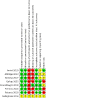
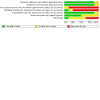

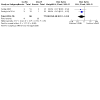

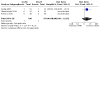
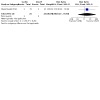

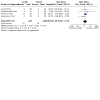
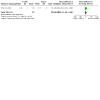
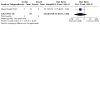
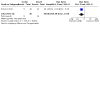
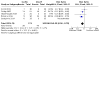
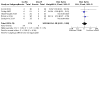

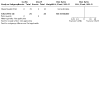
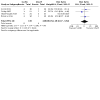
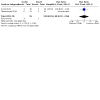
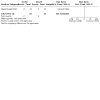

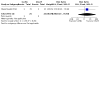
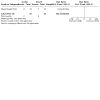

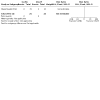
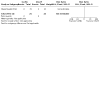
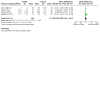
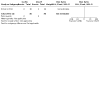
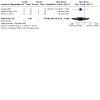
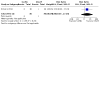
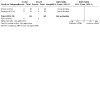
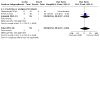

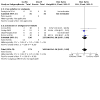




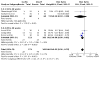
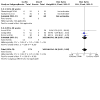

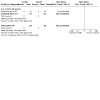
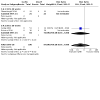

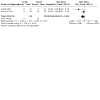
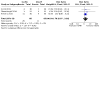
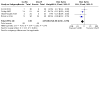

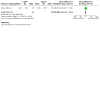

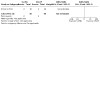
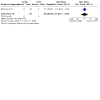
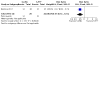
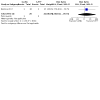



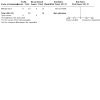
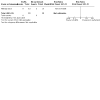
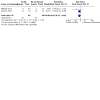
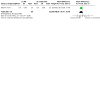

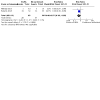
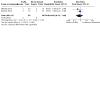
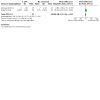
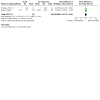
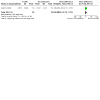
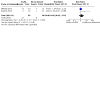
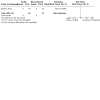
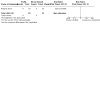
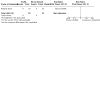
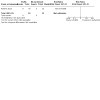
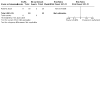

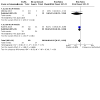
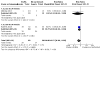
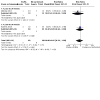
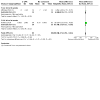
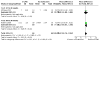
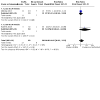
Update of
-
Laryngeal mask airway surfactant administration for prevention of morbidity and mortality in preterm infants with or at risk of respiratory distress syndrome.Cochrane Database Syst Rev. 2011 Jul 6;(7):CD008309. doi: 10.1002/14651858.CD008309.pub2. Cochrane Database Syst Rev. 2011. Update in: Cochrane Database Syst Rev. 2024 Jan 25;1:CD008309. doi: 10.1002/14651858.CD008309.pub3. PMID: 21735428 Updated.
References
References to studies included in this review
Amini 2019 {published data only}
-
- Amini E , Sheikh M , Shariat M , Dalili H , Azadi N , Nourollahi S . Surfactant administration in preterm neonates using laryngeal mask airway: a randomized clinical trial . Acta Medica Iranica 2019. ; 57 ( 6 ): 348-54 . [pISSN: 0044-6025]
-
- IRCT201602019568N14. Surfactant administration via laryngeal mask airway (LMA) versus endotracheal tube in neonatal respiratory distress syndrome, a randomized controlled trial . trialsearch.who.int/Trial2.aspx?TrialID=IRCT201602019568N14 (first received 10 March 2016) . [CENTRAL: CN-01882974 ]
Attridge 2013 {published data only}
-
- NCT00599651. Randomized controlled trial of surfactant administration by laryngeal mask airway (LMA) . clinicaltrials.gov/ct2/show/NCT00599651 (first received 24 January 2008) . [CENTRAL: CN-01516614 ]
-
- Stewart C , Attridge J , Kattwinkel J . Randomised controlled trial of surfactant administration by laryngeal mask airway (LMA) . In: American Pediatric Society / Society for Pediatric Research Abstract . 2008. .
Barbosa 2017 {published data only}
-
- NCT01173237. Efficacy evaluation of surfactant administration for respiratory distress syndrome treatment via laryngeal mask airway. A randomized controlled trial . clinicaltrials.gov/ct2/show/NCT01173237 (first received 2 August 2010) . [CENTRAL: CN-01530800 ]
Gallup 2022 {published data only}
-
- NCT02164734. Efficacy of rescue surfactant delivery via endotracheal intubation (InSurE technique) versus laryngeal mask airway (LMA) for respiratory distress syndrome (RDS) in preterm neonates [Surfactant via endotracheal tube vs. laryngeal mask airway (LMA) in preterm neonates with respiratory distress syndrome]. clinicaltrials.gov/ct2/show/NCT02164734 (first received 17 June 2014) . [CENTRAL: CN-01546455 ]
Gharehbaghi 2018 {published data only}
-
- Gharehbaghi M , Moghaddam YJ , Radfar R . Comparing the efficacy of surfactant administration by laryngeal mask airway and endotracheal intubation in neonatal respiratory distress syndrome . Crescent Journal of Medical and Biological Sciences 2018. ; 5 ( 3 ): 222-7 . [ISSN: 2148-9696]
-
- IRCT201411183915N12. Comparing the efficacy of surfactant administration by laryngeal mask airway (LMA) and endotracheal intubation in neonatal respiratory distress syndrome . trialsearch.who.int/Trial2.aspx?TrialID=IRCT201411183915N12 (first received 28 November 2014) . [CENTRAL: CN-01855189 ]
Pinheiro 2016 {published data only}
-
- NCT01042600. Rescue surfactant for respiratory distress syndrome (RDS) in newborns: comparing efficacy of delivery via laryngeal mask airway to delivery by endotracheal intubation [Randomized controlled trial of surfactant delivery via laryngeal mask airway (LMA) versus endotracheal Intubation]. clinicaltrials.gov/ct2/show/NCT01042600 (first received 5 January 2010) . [CENTRAL: CN-01527465 ]
-
- Santana-Rivas Q , Pinheiro J , Pezzano C . Trial of surfactant administration via laryngeal mask airway (LMA) vs. endotracheal intubation with premedication in neonatal respiratory distress syndrome (RDS) . In: Pediatric Academic Societies Annual Meeting . 2013. .
Roberts 2018 {published data only}
-
- NCT01116921. Laryngeal mask airway (LMA) for surfactant administration in neonates . clinicaltrials.gov/ct2/show/NCT01116921 (first received 5 May 2010) . [CENTRAL: CN-01576428 ]
-
- Roberts K , Lampland A , Leone T , Tipnis J , Stepka E , Kessel J , et al. Laryngeal mask airway for surfactant administration in neonates . European Journal of Pediatrics 2016. ; 175 ( 11 ): 1491 . - PubMed
-
- Roberts KD , Finer N , Lampland A , Leone T , Tipnis J , Merritt T , et al. Laryngeal mask airway for surfactant administration in neonates . Journal of Investigative Medicine 2016. ; 64 ( 1 ): 157 .
Sadeghnia 2014 {published data only}
-
- Sadeghnia A , Tanhaei M , Mohammadizadeh M , Nemati M . A comparison of surfactant administration through i-Gel and ET-tube in the treatment of respiratory distress syndrome in newborns weighing more than 2000 grams . Advanced Biomedical Research 2014. ; 3 : 160 . [DOI: 10.4103/2277-9175.137875 ] [PMID: ] - DOI - PMC - PubMed
References to studies excluded from this review
Abu Leyah 2022 {published data only}
-
- Abu Leyah NA , Hasan AA , Juneau JN , Al Jammal MA , Jaber GA , Wilding GE , et al. Implementation of surfactant administration through laryngeal or supraglottic airways (SALSA): a Jordanian NICU's journey to improve surfactant administration . Children 2022. ; 9 ( 8 ): 1147 . [DOI: 10.3390/children9081147 ] [PMID: ] - DOI - PMC - PubMed
Barbosa 2012 {published data only}
-
- Barbosa RF , Marcatto Jde O , Silva AC , Silva YP . ProSealTM laryngeal mask airway for surfactant administration in the treatment of respiratory distress syndrome in a premature infant . Revista Brasileira de Terapia Intensiva 2012. ; 24 ( 2 ): 207-10 . [PMID: ] - PubMed
Brimacombe 2004 {published data only}
-
- Brimacombe J , Gandini D , Keller C . The laryngeal mask airway for administration of surfactant in two neonates with respiratory distress syndrome . Paediatric Anaesthesia 2004. ; 14 ( 2 ): 188-90 . [PMID: ] - PubMed
Guthrie 2021 {published data only}
Kaushal 2020 {published data only}
-
- Kaushal M , Asghar S , Kaushal A , Augustine P , Alex M . Surfactant administration through laryngeal supraglottic airway (SALSA): a unique and new technique of surfactant administration . Edorium Journal of Maternal and Child Health 2020. ; 5 : 100008M01MK2020 . [DOI: 10.5348/100008M01MK2020TR ] - DOI
Micaglio 2008 {published data only}
Roberts 2010 {published data only}
Smee 2022 {published data only}
-
- Smee N , Boyd D , Conetta H , O'Shea J . Surfactant administration by laryngeal mask to treat neonates with respiratory distress syndrome: a report following treating 60 infants in two neonatal units . Scottish Medical Journal 2022. ; 67 ( 1 ): 60 .
Trevisanuto 2005 {published data only}
-
- Trevisanuto D , Grazzina N , Micaglio M , Ferrarese P , Zanardo V . Laryngeal mask airway as a delivery channel for administration of surfactant in preterm infants with RDS [Abstract 2920] . In: Proceedings of the American Pediatric Society / Society for Pediatric Research . 2004. .
Vannozzi 2017 {published data only}
-
- Vannozzi I , Ciantelli M , Moscuzza F , Scaramuzzo RT , Panizza D , Sigali E , et al. Catheter and laryngeal mask endotracheal surfactant therapy: the CALMEST approach as a novel MIST technique . Journal of Maternal-Fetal and Neonatal Medicine 2017. ; 30 ( 19 ): 2375-7 . [DOI: 10.1080/14767058.2016.1248938 ] [PMID: ] - DOI - PubMed
Zapata 2022 {published data only}
-
- Zapata HA , Fort P , Roberts KD , Kaluarachchi DC , Guthrie SO . Surfactant administration through laryngeal or supraglottic airways (SALSA): a viable method for low-income and middle-income countries . Frontiers in Pediatrics 2022. ; 10 : 853831 . [DOI: 10.3389/fped.2022.853831 ] [PMID: ] - DOI - PMC - PubMed
Zhong 2020 {published data only}
-
- Zhong XM . Effects of LISA combined with positive laryngeal mask airway pressure into alveolar surfactant on PO2 and PCO2 in neonates with NRDS [LISA技术联合喉罩气道正压通气滴入肺泡表面活性物质对NRDS患儿PO2、PCO2的影响]. Journal of Gannan Medical College 2020. ; 12 : 1209-12 .
References to ongoing studies
ANZCTRN12619000995178 {published data only}
-
- ACTRN12619000995178. Surfactant administration by either supraglottic airway device (SAD) or direct laryngoscopy in late preterm and term newborns on nasal continuous positive airway pressure (nCPAP): a randomised, multi-centre, non-inferiority trial [The SAINT trial: Surfactant by supraglottic Airway versus direct laryngoscopy IN late preterm and Term newborns]. trialsearch.who.int/Trial2.aspx?TrialID=ACTRN12619000995178 (first received 12 July 2019) . [CENTRAL: CN-01974801 ]
CTRI/2016/12/007540 {published data only}
-
- CTRI/2016/12/007540. Laryngeal mask airway versus endotracheal tube for surfactant administration in respiratory distress syndrome in preterm neonates more than 30 weeks of gestation – a randomized control trial [A clinical trial to study the effects of two methods of surfactant administration, through laryngeal mask airway and endotracheal tube in preterm babies with respiratory distress syndrome]. trialsearch.who.int/Trial2.aspx?TrialID=CTRI/2016/12/007540 (first received 6 December 2016) . [CENTRAL: CN-01807424 ]
Additional references
Abdel‐Latif 2010
Abdel‐Latif 2011a
-
- Abdel-Latif ME , Osborn DA . Pharyngeal instillation of surfactant before the first breath for prevention of morbidity and mortality in preterm infants at risk of respiratory distress syndrome . Cochrane Database of Systematic Reviews 2011. , Issue 3 . Art. No: CD008311. [DOI: 10.1002/14651858.CD008311.pub2 ] - DOI - PubMed
Abdel‐Latif 2012
Abdel‐Latif 2021
-
- Abdel-Latif ME , Wheeler KI , Davis PG , De Paoli AG , Dargaville PA . Surfactant therapy via thin catheter in preterm infants with or at risk of respiratory distress syndrome . Cochrane Database of Systematic Reviews 2021. , Issue 5 . Art. No: CD011672. [DOI: 10.1002/14651858.CD011672.pub2 ] - DOI - PMC - PubMed
Al Ali 2022
-
- Al Ali RA , Gautam B , Miller MR , Coulson S , Yuen D . Laryngeal mask airway for surfactant administration versus standard treatment methods in preterm neonates with respiratory distress syndrome: a systematic review and meta-analysis . American Journal of Perinatology 2022. ; 39 ( 13 ): 1433-40 . [PMID: ] - PubMed
Allen 2003
-
- Allen J , Zwerdling R , Gaultier C , Geggel R , Greenough A , Kleinman R , et al, American Thoracic Society . Statement on the care of the child with chronic lung disease of infancy and childhood . American Journal of Respiratory and Critical Care Medicine 2003. ; 168 ( 3 ): 356-96 . [PMID: ] - PubMed
Aly 2001
-
- Aly HZ . Nasal prongs continuous positive airway pressure: a simple yet powerful tool . Pediatrics 2001. ; 108 ( 3 ): 759-61 . [PMID: ] - PubMed
Aly 2008
-
- Aly H , Badawy M , El-Kholy A , Nabil R , Mohamed A . Randomized, controlled trial on tracheal colonization of ventilated infants: can gravity prevent ventilator-associated pneumonia? Pediatrics 2008. ; 122 ( 4 ): 770-4 . [PMID: ] - PubMed
Ardell 2015
-
- Ardell S , Pfister RH , Soll R . Animal derived surfactant extract versus protein free synthetic surfactant for the prevention and treatment of respiratory distress syndrome . Cochrane Database of Systematic Reviews 2015. , Issue 8 . Art. No: CD000144. [DOI: 10.1002/14651858.CD000144.pub3 ] - DOI - PMC - PubMed
Bell 1978
Bellos 2021
Björklund 1997
-
- Björklund LJ , Ingimarsson J , Curstedt T , John J , Robertson B , Werner O , et al. Manual ventilation with a few large breaths at birth compromises the therapeutic effect of subsequent surfactant replacement in immature lambs . Pediatric Research 1997. ; 42 ( 3 ): 348-55 . [PMID: ] - PubMed
Bohlin 2007
-
- Bohlin K , Gudmundsdottir T , Katz-Salamon M , Jonsson B , Blennow M . Implementation of surfactant treatment during continuous positive airway pressure . Journal of Perinatology 2007. ; 27 ( 7 ): 422-7 . [PMID: ] - PubMed
Brimacombe 1999
Chye 1995
-
- Chye JK , Gray PH . Rehospitalization and growth of infants with bronchopulmonary dysplasia: a matched control study . Journal of Paediatrics and Child Health 1995. ; 31 ( 2 ): 105-11 . [PMID: ] - PubMed
Clark 2000
-
- Clark RH , Slutsky AS , Gerstmann DR . Lung protective strategies of ventilation in the neonate: what are they? Pediatrics 2000. ; 105 ( 1 Pt 1 ): 112-4 . [PMID: ] - PubMed
Coalson 1999
-
- Coalson JJ , Winter VT , Siler-Khodr T , Yoder BA . Neonatal chronic lung disease in extremely immature baboons . American Journal of Respiratory and Critical Care Medicine 1999. ; 160 ( 4 ): 1333-6 . [PMID: ] - PubMed
Covidence 2022 [Computer program]
-
- Covidence . Version accessed 3 December 2022 . Melbourne, Australia: Veritas Health Innovation , 2022. . Available at www.covidence.org.
De Klerk 2001
-
- De Klerk AM , De Klerk RK . Use of continuous positive airway pressure in preterm infants: comments and experience from New Zealand . Pediatrics 2001. ; 108 ( 3 ): 761-2 . [PMID: ] - PubMed
Devi 2022
-
- Devi U , Roberts KD , Pandita A . A systematic review of surfactant delivery via laryngeal mask airway, pharyngeal instillation, and aerosolization: methods, limitations, and outcomes . Pediatric Pulmonology 2022. ; 57 ( 1 ): 9-19 . [PMID: ] - PubMed
Doyle 2006
-
- Doyle LW , Victorian Infant Collaborative Study Group . Respiratory function at age 8–9 years in extremely low birthweight/very preterm children born in Victoria in 1991–1992 . Pediatric Pulmonology 2006. ; 41 ( 6 ): 570-6 . [PMID: ] - PubMed
Durrmeyer 2023
-
- Durrmeyer X , Walter-Nicolet E , Chollat C , Chabernaud JL , Barois J , Chary Tardy AC , et al. Premedication before laryngoscopy in neonates: evidence based statement from the French Society of Neonatology (SFN) . Frontiers in Pediatrics 2023. ; 10 : 1075184 . [DOI: 10.3389/fped.2022.1075184 ] [PMID: ] - DOI - PMC - PubMed
Egger 1997
Finer 2010
-
- Finer NN , Carlo WA , Walsh MC , Rich W , Gantz MG , Laptook AR , et al, SUPPORT Study Group of the Eunice Kennedy Shriver NICHD Neonatal Research Network . Early CPAP versus surfactant in extremely preterm infants . New England Journal of Medicine 2010. ; 362 ( 21 ): 1970-9 . [PMID: ] - PMC - PubMed
Fleckonoe 2008
-
- Fleckonoe SJ , Crossley KJ , Lane MA , Allison BJ , Morley CJ , Hooper SB . The effects of mechanical ventilation on airway epithelium in near term and very preterm sheep [Abstract] . Journal of Paediatrics and Child Health 2008. ; 44 : A42.
Ghanta 2007
-
- Ghanta S , Abdel-Latif ME , Lui K , Ravindranathan H , Awad A , Oei J . Propofol compared with the morphine, atropine, and suxamethonium regimen as induction agents for neonatal endotracheal intubation: a randomized, controlled trial . Pediatrics 2007. ; 119 ( 6 ): e1248-55 . [PMID: ] - PubMed
GRADEpro GDT [Computer program]
-
- GRADEpro Guideline Development Tool . GRADEpro GDT . Hamilton (ON) : GRADE Working Group, McMaster University and Evidence Prime , 2023. . Available from gradepro.org.
Grossmann 1986
-
- Grossmann G , Nilsson R , Robertson B . Scanning electron microscopy of epithelial lesions induced by artificial ventilation of the immature neonatal lung; the prophylactic effect of surfactant replacement . European Journal of Pediatrics 1986. ; 145 ( 5 ): 361-7 . [PMID: ] - PubMed
Haberman 2002
-
- Haberman B , Shankaran S , Stevenson DK , Papile LA , Stark A , Korones S , et al. Does surfactant and immediate extubation to nasal continuous positive airway pressure (CPAP) reduce use of mechanical ventilation? Pediatric Research 2002. ; 51 ( 4 ): 349A4.
Hellstrom‐Westas 1992
-
- Hellstrom-Westas L , Bell AH , Skov L , Greisen G , Svenningsen NW . Cerebroelectrical depression following surfactant treatment in preterm neonates . Pediatrics 1992. ; 89 ( 4 Pt 1 ): 643-7 . [PMID: ] - PubMed
Higgins 2017
-
- Higgins JP , Altman DG , Sterne JA , editor(s) . Chapter 8: Assessing risk of bias in included studies. In: Higgins JP, Churchill R, Chandler J, Cumpston MS, editor(s). Cochrane Handbook for Systematic Reviews of Interventions Version 5.2.0 (updated June 2017). Cochrane, 2017 . Available from training.cochrane.org/handbook/archive/v5.2.
Higgins 2022
-
- Higgins JP , Thomas J , Chandler J , Cumpston M , Li T , Page MJ , Welch VA , editor( s) . Cochrane Handbook for Systematic Reviews of Interventions Version 6.3 (updated February 2022). Cochrane, 2022 . Available from training.cochrane.org/handbook/archive/v6.3.
Ho 2020a
Ho 2020b
Hughes 1999
-
- Hughes CA , O'Gorman LA , Shyr Y , Schork MA , Bozynski ME , McCormick MC . Cognitive performance at school age of very low birth weight infants with bronchopulmonary dysplasia . Journal of Developmental and Behavioral Pediatrics 1999. ; 20 ( 1 ): 1-8 . [PMID: ] - PubMed
Jorch 1997
-
- Jorch G , Hartl H , Roth B , Kribs A , Gortner L , Schaible T , et al. Surfactant aerosol treatment of respiratory distress syndrome in spontaneously breathing premature infants . Pediatric Pulmonology 1997. ; 24 ( 3 ): 222-4 . [PMID: ] - PubMed
Kamper 1999
-
- Kamper J . Early nasal continuous positive airway pressure and minimal handling in the treatment of very-low-birthweight infants . Biology of the Neonate 1999. ; 76 ( Suppl 1 ): 22-8 . [PMID: ] - PubMed
Kattwinkel 2004
-
- Kattwinkel J , Robinson M , Bloom B , Delmore P , Ferguson JE . Technique for intrapartum administration of surfactant without requirement for an endotracheal tube . Journal of Perinatology 2004. ; 24 ( 6 ): 360–5 . [PMID: ] - PubMed
Kilbride 2003
-
- Kilbride HW , Gelatt MC , Sabath RJ . Pulmonary function and exercise capacity for ELBW survivors in preadolescence: effect of neonatal chronic lung disease . Journal of Pediatrics 2003. ; 143 ( 4 ): 488-93 . [PMID: ] - PubMed
Korhonen 1999
-
- Korhonen P , Koivisto AM , Ikonen S , Laippala P , Tammela O . Very low birthweight, bronchopulmonary dysplasia and health in early childhood . Acta Paediatrica 1999. ; 88 ( 12 ): 1385-91 . [PMID: ] - PubMed
Kribs 2007
-
- Kribs A , Pillekamp F , Hűsneler C , Vierzig A , Roth B . Early administration of surfactant in spontaneous breathing with nCPAP: feasibility and outcome in extremely premature infants (postmenstrual age </=27 weeks) . Paediatric Anaesthesia 2007. ; 17 ( 4 ): 364-9 . [PMID: ] - PubMed
Kugelman 2007
-
- Kugelman A , Feferkorn I , Riskin A , Chistyakov I , Kaufman B , Bader D . Nasal intermittent mandatory ventilation versus nasal continuous positive airway pressure for respiratory distress syndrome: a randomized, controlled, prospective study . Journal of Pediatrics 2007. ; 150 ( 5 ): 521-6 . [PMID: ] - PubMed
Lemyre 2002
-
- Lemyre B , Davis PG , De Paoli AG . Nasal intermittent positive pressure ventilation (NIPPV) versus nasal continuous positive airway pressure (NCPAP) for apnea of prematurity . Cochrane Database of Systematic Reviews 2002. , Issue 1 . Art. No: CD002272. [DOI: 10.1002/14651858.CD002272 ] - DOI - PubMed
Lemyre 2017
-
- Lemyre B , Davis PG , De Paoli AG , Kirpalani H . Nasal intermittent positive pressure ventilation (NIPPV) versus nasal continuous positive airway pressure (NCPAP) for preterm neonates after extubation . Cochrane Database of Systematic Reviews 2017. , Issue 2 . Art. No: CD003212. [DOI: 10.1002/14651858.CD003212.pub3 ] - DOI - PMC - PubMed
Majnemer 2000
-
- Majnemer A , Riley P , Shevell M , Birnbaum R , Greenstone H , Coates AL . Severe bronchopulmonary dysplasia increases risk for later neurological and motor sequelae in preterm survivors . Developmental Medicine and Child Neurology 2000. ; 42 ( 1 ): 53-60 . [PMID: ] - PubMed
Marshall 1984
-
- Marshall T , Deeder R , Pai S , Berkowitz GP , Austin TL . Physiologic changes associated with endotracheal intubation in preterm infants . Critical Care Medicine 1984. ; 12 ( 6 ): 501-3 . [PMID: ] - PubMed
Morley 2008
-
- Morley CJ , Davis PG , Doyle LW , Brion LP , Hascoet JM , Carlin JB , COIN Trial Investigators . Nasal CPAP or intubation at birth for very preterm infants . New England Journal of Medicine 2008. ; 358 ( 7 ): 700-8 . [PMID: ] - PubMed
O'Reilly 2008
-
- O'Reilly M , Hooper SB , Allison BJ , Snibson K , Harding R , Sozo F . Airway remodelling and pulmonary inflammation in a model of ventilator-induced injury of the very preterm lung [Abstract] . Journal of Paediatrics and Child Health 2008. ; 44 : A63.
Papile 1978
-
- Papile LA , Burstein J , Burstein R , Koffler H . Incidence and evolution of the subependymal intraventricular hemorrhage: a study of infants with birth weights less than 1,500 gm . Journal of Pediatrics 1978. ; 92 ( 4 ): 529-34 . [PMID: ] - PubMed
Pejovic 2020
Petrikovsky 1995
Pfister 2007
-
- Pfister RH , Soll R , Wiswell TE . Protein containing synthetic surfactant versus animal derived surfactant extract for the prevention and treatment of respiratory distress syndrome . Cochrane Database of Systematic Reviews 2007. , Issue 4 . Art. No: CD006069. [DOI: 10.1002/14651858.CD006069.pub3 ] - DOI - PubMed
Qureshi 2018
Reininger 2005
-
- Reininger A , Khalak R , Kendig JW , Ryan RM , Stevens TP , Reubens L , et al. Surfactant administration by transient intubation in infants 29 to 35 weeks' gestation with respiratory distress syndrome decreases the likelihood of later mechanical ventilation: a randomized controlled trial . Journal of Perinatology 2005. ; 25 ( 11 ): 703-8 . [PMID: ] - PubMed
RevMan Web 2022 [Computer program]
-
- Review Manager Web (RevMan Web) . Version 4.12.0. The Cochrane Collaboration , 2022. . Available at revman.cochrane.org.
Sarkar 2006
-
- Sarkar S , Schumacher RE , Baumgart S , Donn SM . Are newborns receiving premedication before elective intubation? Journal of Perinatology 2006. ; 26 ( 5 ): 286-9 . [PMID: ] - PubMed
Schünemann 2013
-
- Schünemann H , Brożek J , Guyatt G , Oxman A , editor(s) . GRADE handbook for grading quality of evidence and strength of recommendations. Updated October 2013. The GRADE Working Group, 2013 . Available from guidelinedevelopment.org/handbook.
Seger 2009
Shennan 1988
-
- Shennan AT , Dunn MS , Ohlsson A , Lennox K , Hoskins EM . Abnormal pulmonary outcomes in premature infants: prediction from oxygen requirement in the neonatal period . Pediatrics 1988. ; 82 ( 4 ): 527-32 . [PMID: ] - PubMed
Skidmore 1990
-
- Skidmore MD , Rivers A , Hack M . Increased risk of cerebral palsy among very low-birthweight infants with chronic lung disease . Developmental Medicine and Child Neurology 1990. ; 32 ( 4 ): 325-32 . [PMID: ] - PubMed
Soll 2000
Soll 2002
Soll 2009
Soll 2010
Stevens 2007
-
- Stevens TP , Blennow M , Myers EW , Soll R . Early surfactant administration with brief ventilation vs. selective surfactant and continued mechanical ventilation for preterm infants with or at risk for respiratory distress syndrome . Cochrane Database of Systematic Reviews 2007. , Issue 4 . Art. No: CD003063. [DOI: 10.1002/14651858.CD003063.pub3 ] - DOI - PMC - PubMed
Tooley 1987
-
- Tooley WH , Clements JA , Muramatsu K , Brown CL , Schlueter MA . Lung function in prematurely delivered rabbits treated with a synthetic surfactant . American Review of Respiratory Disease 1987. ; 136 ( 3 ): 651-6 . [PMID: ] - PubMed
van de Berg 2010
-
- de Berg E , Lemmers PMA , Toet MC , Klaessens J , Van Bel F . The effect of the "InSurE" procedure on cerebral oxygenation and electrical brain activity of the preterm infant . Archives of Disease in Childhood Fetal and Neonatal Edition 2010. ; 95 ( 1 ): F53-8 . [DOI: 10.1136/adc.2008.156414 ] [PMID: ] - DOI - PubMed
van Marter 2000
-
- Marter LJ , Allred EN , Pagano M , Sanocka U , Parad R , Moore M , et al. Do clinical markers of barotrauma and oxygen toxicity explain interhospital variation in rates of chronic lung disease? The Neonatology Committee for the Developmental Network . Pediatrics 2000. ; 105 ( 6 ): 1194-201 . [PMID: ] - PubMed
Vannozzi 2017
-
- Vannozzi I , Ciantelli M , Moscuzza F , Scaramuzzo RT , Panizza D , Sigali E , et al. Catheter and laryngeal mask endotracheal surfactant therapy: the CALMEST approach as a novel MIST technique . Journal of Maternal-Fetal & Neonatal Medicine 2017. ; 30 ( 19 ): 2375-7 . [DOI: 10.1080/14767058.2016.1248938 ] [PMID: ] - DOI - PubMed
Verder 1994
-
- Verder H , Robertson B , Greisen G , Ebbesen F , Albertsen P , Lundstrom K , et al, Danish-Swedish Multicenter Study Group . Surfactant therapy and nasal continuous positive airway pressure for newborns with respiratory distress syndrome. Danish-Swedish Multicenter Study Group . New England Journal of Medicine 1994. ; 331 ( 16 ): 1051-5 . [PMID: ] - PubMed
Victorin 1990
-
- Victorin LH , Deverajan LV , Curstedt T , Robertson B . Surfactant replacement in spontaneously breathing babies with hyaline membrane disease–a pilot study . Biology of the Neonate 1990. ; 58 ( 3 ): 121-6 . [PMID: ] - PubMed
Walsh 1988
-
- Walsh MC , Kliegman RM , Fanaroff AA . Necrotizing enterocolitis: a practitioner's perspective . Pediatrics in Review 1988. ; 9 ( 7 ): 219-26 . [PMID: ] - PubMed
Walsh 2004
-
- Walsh MC , Yao Q , Gettner P , Hale E , Collins M , Hensman A , et al, National Institute of Child Health and Human Development Neonatal Research Network . Impact of a physiologic definition on bronchopulmonary dysplasia rates . Pediatrics 2004. ; 114 ( 5 ): 114 . [DOI: 10.1542/peds.2004-0204 ] [PMID: ] - DOI - PubMed
Wanous 2017
Young 2005
-
- Young KC , Del Moral T , Claure N , Vanbuskirk S , Bancalari E . The association between early tracheal colonization and bronchopulmonary dysplasia . Journal of Perinatology 2005. ; 25 ( 6 ): 403-7 . [PMID: ] - PubMed
Zapata 2022
-
- Zapata HA , Fort P , Roberts KD , Kaluarachchi DC , Guthrie SO . Surfactant administration through laryngeal or supraglottic airways (SALSA): a viable method for low-income and middle-income countries . Frontiers in Pediatrics 2022. ; 10 : 853831 . [DOI: 10.3389/fped.2022.853831 ] [PMID: ] - DOI - PMC - PubMed
References to other published versions of this review
Abdel‐Latif 2010b
-
- Abdel-Latif ME , Osborn DA . Laryngeal mask airway surfactant administration for prevention of morbidity and mortality in preterm infants with or at risk of respiratory distress syndrome . Cochrane Database of Systematic Reviews 2010. , Issue 1 . Art. No: CD008309. [DOI: 10.1002/14651858.CD008309 ] - DOI - PMC - PubMed
Abdel‐Latif 2011b
-
- Abdel-Latif ME , Osborn DA . Laryngeal mask airway surfactant administration for prevention of morbidity and mortality in preterm infants with or at risk of respiratory distress syndrome . Cochrane Database of Systematic Reviews 2011. , Issue 7 . Art. No: CD008309. [DOI: 10.1002/14651858.CD008309.pub2 ] - DOI - PubMed
Publication types
MeSH terms
Substances
Associated data
LinkOut - more resources
Full Text Sources
Medical
Miscellaneous

